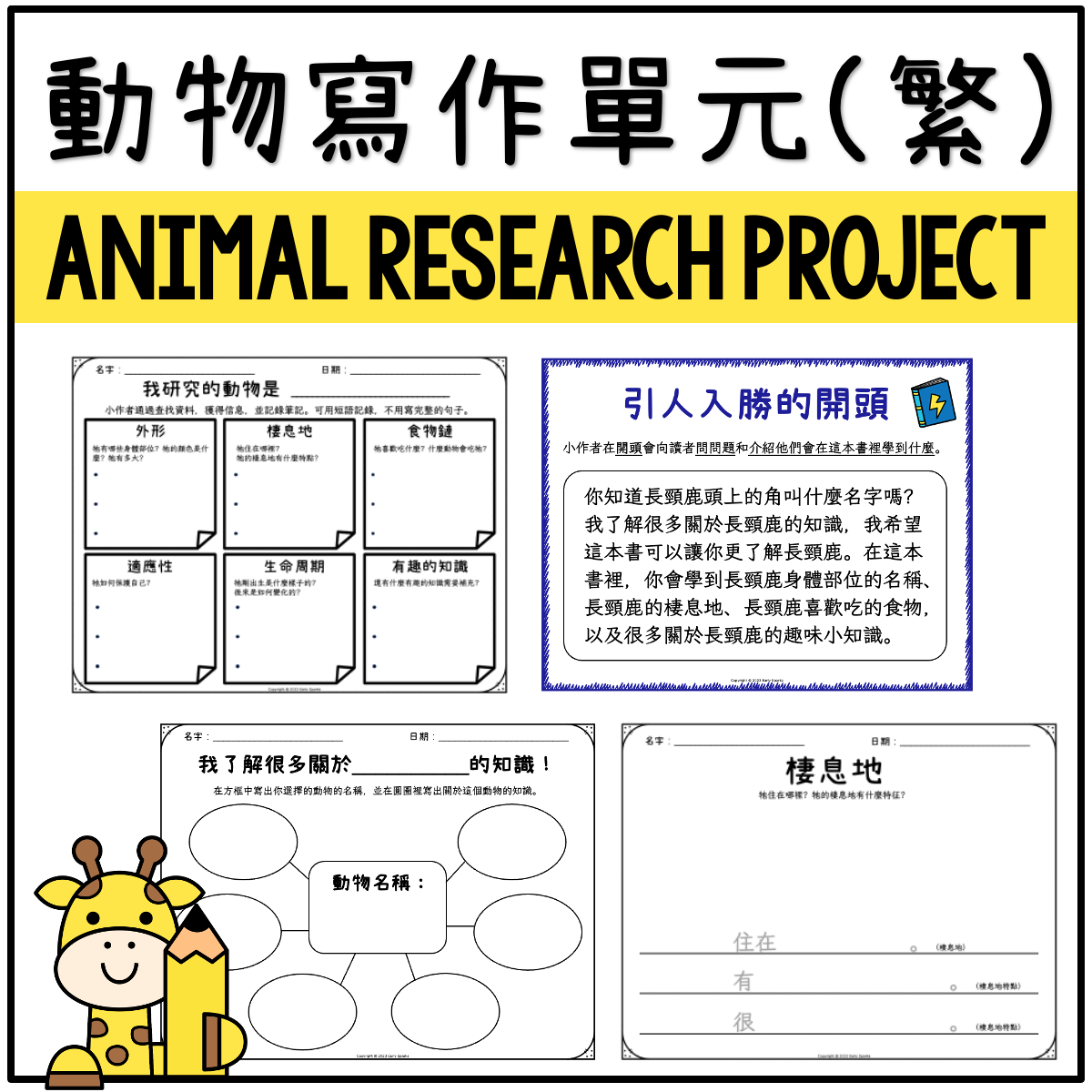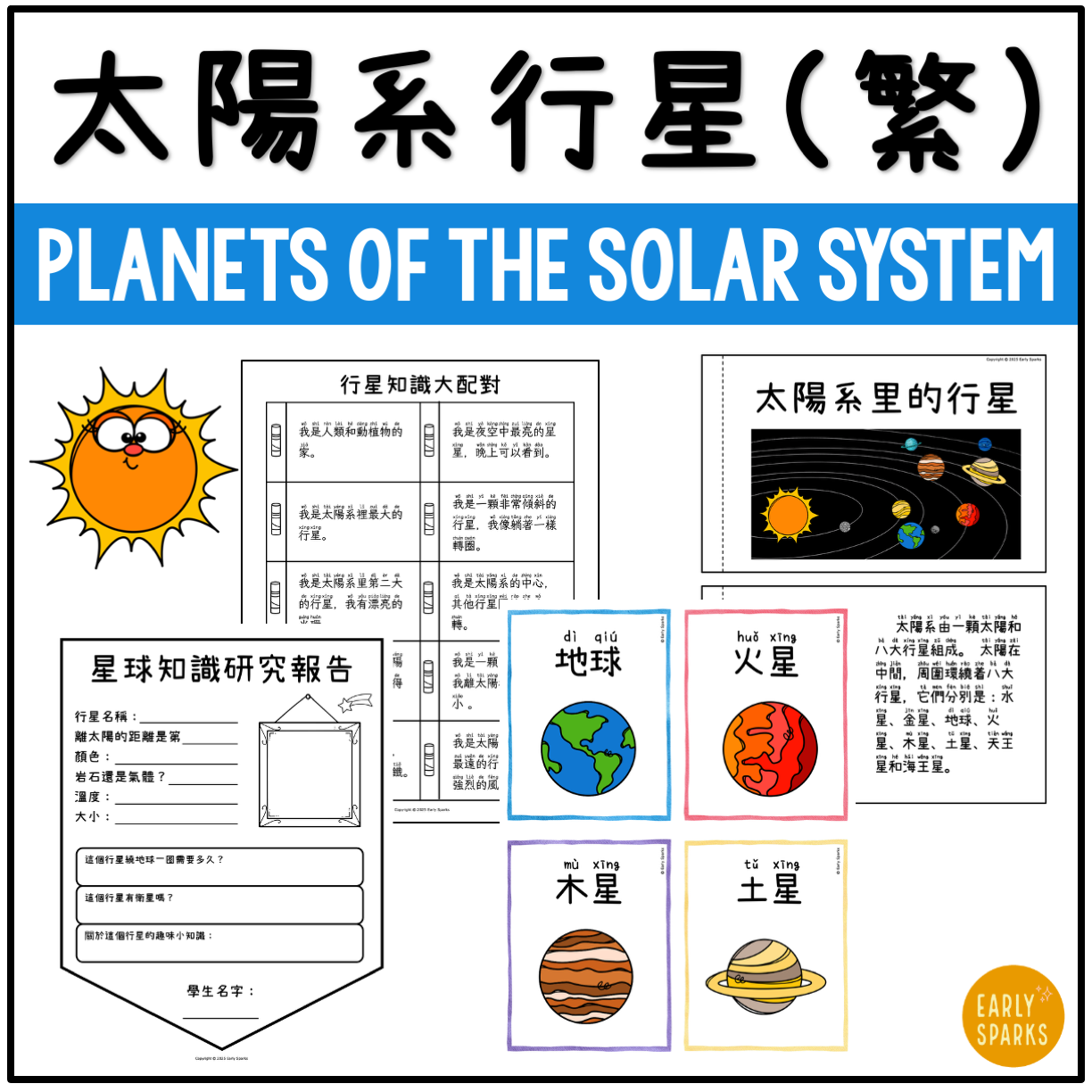Best Chinese Science Resources for Kids
Science is all around us, and learning about it in Chinese makes the experience even more meaningful! Whether you’re teaching in a Chinese immersion classroom or helping your child learn Chinese at home, the right resources can spark curiosity and build language skills.
Here are some of the best Chinese science resources for kids, covering core elementary topics like the human body, plants, animal habitats, astronomy, and more.
1. My Body 我的身体
Learning about the human body in Chinese helps children connect language to themselves in a natural way. As they learn words like 手 (shǒu, hand), 脚 (jiǎo, foot), and 身体 (shēn tǐ, body), they start to see how Chinese describes their everyday world, and those discoveries often lead to fun conversations.
Click the images below to see more details and previews of the resource.
2. Living and Nonliving Things 生物和非生物
One of the first science concepts kids learn is the difference between living and nonliving things. Students can explore words like 生物 (shēng wù, living things) and 非生物 (fēi shēng wù, nonliving things), discuss what living things need to survive, or go on a scavenger hunt to find examples of of living and nonliving things.
Click the images below to see more details and previews of the resource.
3. Weather 天气
Weather is something children experience every day, making it a perfect topic for learning Chinese. Students can practice words like 下雨 (xià yǔ, rain), 下雪 (xià xuě, snow), and 晴天 (qíng tiān, sunny). They can chart the daily weather and discuss what people wear for different types of weather. A fun, hands-on way to build both science knowledge and Chinese vocabulary!
Click the images below to see more details and previews of the resource.
4. Plants and Life Cycles 植物和生长周期
Watching a tiny seed sprout and grow is magical for kids, and it’s a perfect opportunity to learn Chinese along the way! Students can explore words like 种子 (zhǒng zi, seed), 花 (huā, flower), and 果实 (guǒ shí, fruit) as they observe real plants and learn about plant life cycles. You can also tie this theme to seasonal adventures, like visiting a pumpkin patch or apple orchard in the fall, bringing science and Chinese learning to life at the same time!
Click the images below to see more details and previews of the resource.
5. Animals and Habitats 动物栖息地
Learning about animals and their homes is always exciting for children! They can explore words like 森林 (sēn lín, forest), 海洋 (hǎi yáng, ocean), and 沙漠 (shā mò, desert) while discovering where animals live and how they adapt to survive in their environments. Kids can research their favorite animal and write about it in Chinese, or even create a shoebox habitat project.
Click the images below to see more details and previews of the resource.
6. Environmental Science 环境科学
Learning how to care for our planet helps children become responsible global citizens. In Chinese, they can learn key vocabulary like 回收 (huí shōu, recycle), 污染 (wū rǎn, pollution), and 环境 (huán jìng, environment) while exploring real-world ways to protect nature. They can sort recyclable and non-recyclable items or design posters in Chinese about saving our earth. These activities inspire eco-friendly habits while building meaningful Chinese vocabulary.
Click the images below to see more details and previews of the resource.
7. Astronomy 天文学
Astronomy sparks kids’ curiosity about the universe! Students can learn Chinese vocabulary for planets such as月亮 (yuè liang, moon), 太阳 (tài yáng, sun), and 星星 (xīng xing, stars) while exploring the wonders of space. They can build a model and observe how Earth rotates and revolves around the sun, or learn the moon phases in Chinese. These hands-on activities make science and language learning shine bright together!
8. Scientific Methods 科学方法
Introducing the scientific method helps kids think and explore like real scientists! They will learn words including 观察 (guān chá, observe), 假设 (jiǎ shè, hypothesis), 实验 (shí yàn, experiment), and 结果 (jié guǒ, result).
Your students can record their predictions and results in Chinese, practice asking questions before testing an idea, and share their findings with classmates using simple Chinese sentences.
We hope these ideas help make Chinese science lessons interactive, enjoyable, and memorable for your students or children.



















